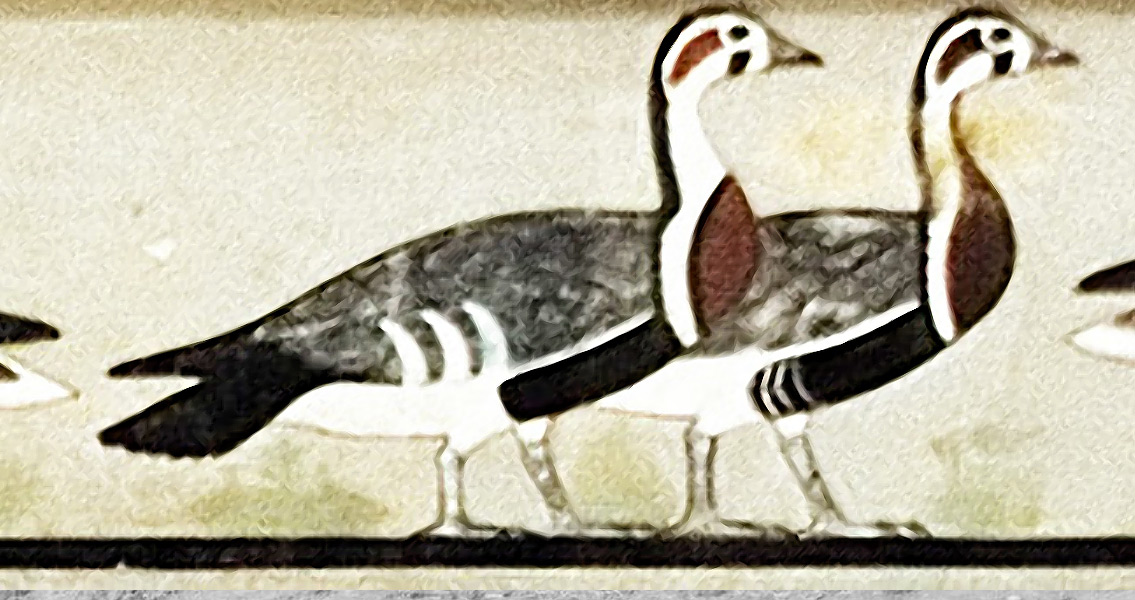<![CDATA[An ancient Egyptian masterpiece has been found to be a fake. 'The Meidum Geese', as modern-day Egyptologists and art historians refer to it, depicts six geese in profile, with a level of finesse which sets it apart from any other ancient Egyptian artwork. The painting's beauty and detail has led it to be called the 'Mona Lisa' of ancient Egyptian artwork. It was said to have been discovered in 1871 by Luigi Vassalli, in a tomb near the Meidum Pyramid built for the Pharaoh Snefru who ruled Egypt between 2610 and 2590 BCE. The tomb belonged to the Pharaoh's son, Nefermaat, and the painting was supposedly found in a chapel within the complex. 'The Meidum Geese' is now housed in the Egyptian Museum in Cairo. Recent analysis of the painting, however, has shown it to be a nineteenth-century forgery. "Doubting the authenticity of a masterpiece seems almost impossible and it is a mentally painful process," wrote Francesco Tiradritti, Professor at the Kore University of Enna. "After months of study, I came to the conclusion that there are few doubts on the falsification of the 'Meidum Geese.'" Whilst the Meidum Geese may be a fake, it could conceal real ancient Egyptian artwork. A real Egyptian painting may be hidden underneath. "The only thing that, in my opinion, still remains to ascertain is what was (or 'is') painted under them. But that can be only established through a noninvasive analysis," Tiradritti wrote in a summary of his findings submitted to the journal, Live Science. Tiradritti’s suspicions were first aroused by the birds depicted on the Meidum Geese. Two of which were unlikely to have inhabited ancient Egypt. “The painting depicts three different couple[s] of geese, three turned to the left and three to the right,” Tiradritti wrote. Two of the geese were identified as white-fronted geese (Anser albifrons), the pair looking to the left were understood to be bean geese (Anser fabalis) and the pair facing the right were red-breasted geese (Branta ruficolis).” Bean geese breed in tundra and taiga climates, wintering as far south as northern Spain, Greece and Turkey. Red-breasted geese also breed in tundra, but rarely make it as far south as Egypt. Whilst this information regarding the species does not in itself prove the Meidum Geese to be a fake – ancient Egyptians could have known about animals which were not native to Egypt – it made Tiradritti analyse the work further. “After that, it was like to see a castle of cards collapsing,” he said. “One of the major problems with the Meidum Geese is the colours. Some of the hues (especially beige and marc) are unique in the Egyptian art. Even the shades of more common colours, like orange and red, are not even comparable with the same colors used in other fragments of painting coming from Atet’s (Nefermaat’s wife, in whose chapel the painting was supposedly discovered), chapel,” Tiradritti said. Two of the geese are leaning over, in order to make the size of all the geese balanced. This is unusual in ancient Egyptian artwork. Size often denoted importance and as such, Egyptian artists tended to deliberately draw animals or people in different sizes. Balancing size in a composition is a common feature of modern art, however. Tiradritti is due to publish his findings in the 5th April edition of Giornale dell’Arte and The Art Newspaper, in Italian and English respectively. His findings will cause the artistic world to think critically about ancient art, especially given the high prices these works can attract. For more information: www.livescience.com Image courtesy of Wikimedia Commons user: MGA73bot2 ]]>
Egyptian 'Mona Lisa' A Fake
